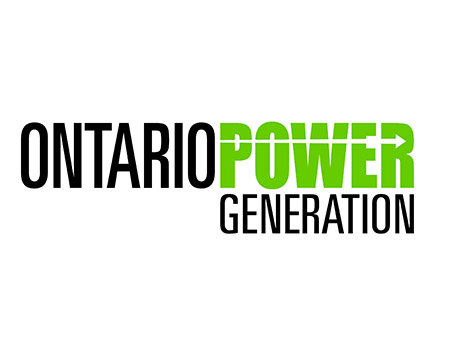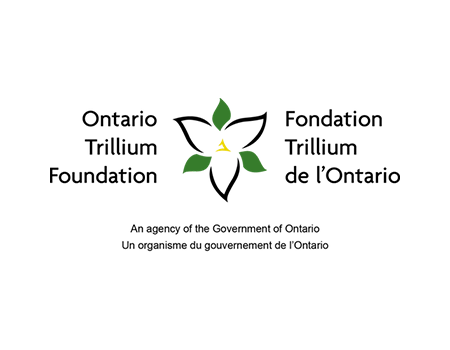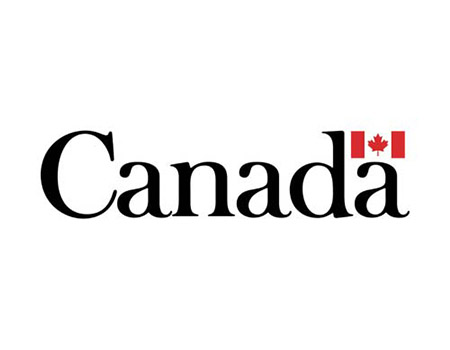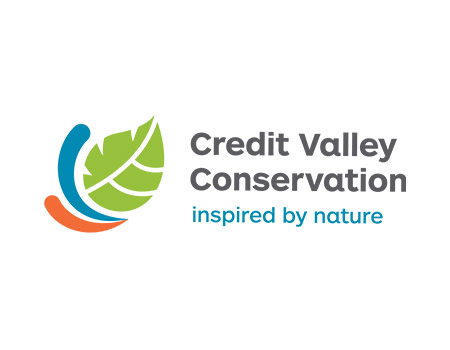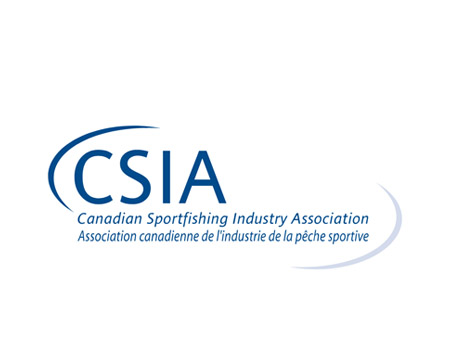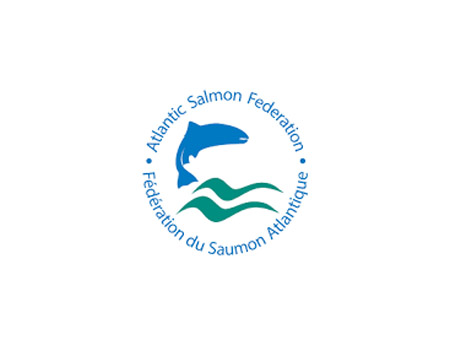Why are Atlantic Salmon being restored to Lake Ontario and its tributaries?
Until the late 19th century, Lake Ontario had a population of Atlantic Salmon native to its waters. Unfortunately, that population, which supported sustenance and commercial fisheries, was eliminated through the combined effects of the environmental degradation of streams, ecosystem changes in the lake, and over-fishing. Atlantic Salmon were one of the first fish species in the Great Lakes to disappear as a result of human activities.
The government of Ontario and its conservation partners have long supported the restoration of native species and the conservation of biodiversity. Many years of research have shown that the restoration of Atlantic Salmon is possible. For these reasons, more than 40 partners are working together on this initiative to restore a self-sustaining Atlantic Salmon population to Lake Ontario and its streams.
What is the current status of Atlantic Salmon?
As a species, Atlantic Salmon are extirpated from Lake Ontario; the lake’s historic population is classified as extinct. Ontario anglers now catch adult Atlantic Salmon in Lake Ontario as a result of our restoration program and New York State’s put-grow-take program. Lake Superior State University stocks Atlantic Salmon in the St Mary’s River, which then make their way to Lake Huron and Georgian Bay. Trout Lake, near North Bay, has a small naturally reproducing population that is the result of stocking. Across their global and Canadian ranges, Atlantic Salmon are in decline. In 2000 the number of adult spawners was estimated to be less than 25 percent that of 1970.
Why is restoration happening now?
Water quality rehabilitation efforts since the 1970’s had produced significant positive results in stream quality in Ontario, so much so that in 1987 the Ontario Ministry of Natural Resources (OMNR) reconsidered the potential of restoring Atlantic Salmon to Lake Ontario. Initial efforts used an experimental stocking program to research specific questions about Atlantic Salmon biology in Lake Ontario’s tributaries. Those questions were answered sufficiently by 2003 and in 2006, with funding in place, a much larger initiative to restore the species to Lake Ontario was launched.
Who is leading the program?
The Ontario Federation of Anglers and Hunters (OFAH) and the Ministry of Natural Resources and Forestry (MNRF) are jointly leading the restoration program. The OFAH is heading the non-government/private sector and the MNRF is the lead government agency. Within the MNRF, the Lake Ontario Management Unit, the Aquatic Research and Development Branch, Fish Culture Section, and Aurora and Peterborough districts are involved.
Who are the key sponsors?
Ontario Power Generation (OPG) was the lead sponsor for Phase II (2011-2015) and has continued that support for Phase III (2016-2021), with a contribution of over $2 million during that ten-year period.
Through its Natural Heritage Fund, the LCBO was a key sponsor at $50,000 annually through Phases I (2006-2010) and II. Banrock Station Wines was the initial lead sponsor during Phase I, and supported the program through to 2012. TD Friends of the Environment Foundation has been a sponsor of habitat projects since 2012, particularly tree-planting activities. Fleming College is a major partner by raising Atlantic Salmon at its Frost campus in Lindsay.
Who are the other partners?
We are fortunate to be working with more than 40 partners and sponsors in this effort, including Fisheries and Oceans Canada, Trout Unlimited Canada, Ontario Streams, Great Lakes Fishery Commission (GLFC), Canadian Sportfishing Industry Association, Transport Canada, and four Conservation authorities: Toronto and Region, Ganaraska Region, Credit Valley, and Halton. Many community groups and individual landowners are also pitching in and dozens of schools in southern Ontario are raising Atlantic Salmon in their classrooms, with help from programs such as Let’s Talk Science out of McMaster University, and the Toronto Zoo.
Why did the historic population of Lake Ontario Atlantic Salmon go extinct?
European settlement of the Great Lakes basin had wide-ranging effects on the region’s ecosystem, particularly on the streams containing vital spawning and nursery habitats for Atlantic Salmon. Clear-cutting for agriculture removed the forest cover necessary to keep streams cool and also greatly magnified the amount of soil eroding into the streams. Soil erosion, combined with changes in water flow from dams, mills, and channelization, resulted in the silting over of the rock bottom that Atlantic Salmon deposit their eggs on and young Atlantics use as habitat. Dams and mills were also barriers to many spawning sites for returning adults; the dams were too high for salmon to get over, even though they are capable of leaping three meters. Commercial and sustenance fisheries also played a role in their decline.
Why are streams being rehabilitated to help restore a lake fish?
Streams are critical habitat components in the life cycle of Atlantic Salmon. Atlantic Salmon require specific habitat and environmental conditions in the stream at each life stage, and it was the degradation of streams that was the principal factor in their extirpation from Lake Ontario. That is why the emphasis is being placed on stream habitat restoration for the ultimate recovery of Atlantic Salmon in the lake.
In late summer and early fall, mature adults return from Lake Ontario to holding areas near or in the mouths of streams. Shortly thereafter they begin to move up into the streams, leaping over minor barriers, until they reach sites with rock or gravel habitat suitable for spawning. They spawn in November and the adults then return to the lake. The eggs overwinter in the spawning site, hatching as temperatures warm when spring approaches. Young Atlantic Salmon occupy nursery habitat in the stream for one to three years before migrating to the lake to grow and mature. Unlike naturalized salmon species such as Chinook (King) and Coho, which only spawn once then die, mature Atlantic Salmon will spawn year after year.
Which streams are the focus of the Atlantic Salmon restoration?
The first phase of restoration (2006-2010) stocked the Credit River, Duffins Creek, and Cobourg Creek. The Humber River and Bronte Creek were selected as future restoration rivers and had some minor stocking in Phases I and II. In Phase III, we are continuing to stock the initial streams, as well as the Ganaraska River, which is being stocked with yearlings to create a tributary fishery and test another restoration model for Atlantic Salmon that has had some success in New York. The streams were chosen for their high-quality spawning and nursery habitat, and strong community support.
How long will it take to restore Atlantic Salmon?
We expect it will take a further 10-15 years to realize a self-sustaining population based on naturally reproducing Atlantic Salmon in Lake Ontario.
Will Atlantic Salmon stocking replace the stocking of other species?
All Atlantic Salmon stocking is done in addition to Ontario’s normal fish culture production plans, which support the binational Fish Community Objectives for Lake Ontario, the Joint Strategic Plan for the Management of Great Lakes Fisheries coordinated by the GLFC, and the Stocking Plan for the Canadian Waters of Lake Ontario.
Will other salmon and trout species be affected by the restoration of Atlantic Salmon?
Current evidence shows all salmonine can co-exist, provided sufficient habitat exists and is accessible in the streams. The Lake Ontario fish community is complex and constantly changing, therefore it is challenging to completely predict the impacts of increased Atlantic Salmon numbers. The process of adaptive management will be used to provide flexibility and responsiveness to any observed changes in the lake ecosystem.
Lake Ontario and its tributaries have many salmon and trout species including Chinook and Coho Salmon, Lake Trout, Rainbow Trout (Steelhead), Brown Trout, and Brook (Speckled) Trout.
What are the current (2018) and future regulations for Atlantic Salmon in Lake Ontario and its tributaries?
With a 2018 Ontario Sport version fishing licence, one Atlantic Salmon with a minimum length of 63cm (24.8in.) is permitted from Lake Ontario (Fisheries Management Zone 20). This counts toward the overall combined limit of five salmon and trout from Lake Ontario and the St. Lawrence River. The season on Lake Ontario is open all year. With a 2018 Conservation version fishing licence, the catch and possession of Atlantic Salmon is prohibited in the lake.
Beginning in 2016, a catch-and-release tributary fishery for Atlantic Salmon has opened in Fisheries Management Zones 16 and 17, for which either type of fishing licence applies. Please remember to know your fish ID and immediately release Atlantic Salmon back into the river. This year, angler diaries will be available to tributary anglers to record their catches of Atlantic Salmon and other species.
The Lake Ontario Atlantic Salmon Recovery Team will continue to monitor and set benchmarks for the future management of stream fisheries and harvest.
Is Atlantic Salmon a popular sport fish?
Atlantic Salmon are world renowned as a sport fish. Their scientific name, Salmo salar, translates roughly as “leaping salmon”.
Is Atlantic Salmon a food source?
Atlantic Salmon are highly valued for their taste, dating back to the time of Gauls and Romans. Commercial fisheries existed wherever Atlantic Salmon were present, and today, fish farms on both the Atlantic and Pacific coasts supply fish to grocery stores and restaurants. Anglers fishing Lake Ontario should check the Ontario Guide to Eating Sport Fish which is jointly produced by the Ministries of Environment and Natural Resources and is available in print and online.
How can people help?
Public support and involvement in the Lake Ontario Atlantic Salmon Restoration Program has been excellent during our Phase I efforts. Individual stakeholders, school groups, and conservation groups are playing a vital role in rearing and stocking Atlantic Salmon fry, and reporting catches of Atlantic Salmon in angler creels (diaries). Volunteers are also helping to restore the high-quality stream habitat needed for egg and fry survival. For information on how to start a classroom hatchery project, restore fish habitat or keep an angler diary contact info@bringbackthesalmon.ca or call the program coordinator at 705-748-6324 ext 237.
Fundraising is another important way for the public to get involved, by supporting our corporate sponsors, contributing through the Adopt An Atlantic Salmon Program, or participating in local events.
What are the unique physical characteristics of Atlantic Salmon?
Atlantic Salmon resemble several other salmonine species which are also present in Lake Ontario and its tributaries, most notably Brown Trout and Rainbow Trout (Steelhead). Even fisheries professionals have been known to misidentify Atlantic Salmon. Anglers are invited to submit digital photographs of a suspected Atlantic Salmon catch for confirmation by emailing info@bringbackthesalmon.ca.
How is the program structured?
Fish Production
- Over 6,000,000 young Atlantic Salmon have been stocked since May 2006
- Hundreds of volunteers have contributed thousands of hours of their time to help stock Atlantic Salmon into suitable habitats.
- Atlantic Salmon are currently produced at MNRF’s Normandale Fish Culture Station (FCS), Harwood Fish Culture Station (FCS), Fleming College, Belfountain Community Hatchery, Credit River Anglers Association Hatchery and Islington Sportsmen’s Club.
- The MNRF Normandale FCS underwent a major, $18 million, renovation and is the primary facility for raising Atlantic Salmon. Currently, Harwood FCS houses all brood stock.
- To improve chances for successful restoration of self-sustaining populations in Lake Ontario, three strains of Atlantic Salmon with contrasting characteristics are being introduced, currently the primary production strain is from the LaHave River, Nova Scotia. Other strains are Sebago Lake, Maine, and Lac St. Jean, Quebec.
Research and Monitoring
- Juvenile Atlantic Salmon are intensively monitored each fall and the following spring at stations in the Credit River.
- Growth of juveniles in the restoration streams has been excellent. Atlantic Salmon stocked as 1g fry in the spring averaged 10-13g in the fall.
- When monitoring returns of adult Atlantic Salmon in each of the restoration streams, program partners look for signs of successful natural reproduction (nests).
- Each Atlantic Salmon brood fish in the MNRF’s Harwood FCS has been implanted with a special microchip. A genetic profile for each individual fish will enable the program to obtain very accurate information about Atlantic Salmon found in the streams and the lake during monitoring efforts.
Water Quality and Habitat Enhancement
- Throughout the first ten years of the program (2006-2015) 198 habitat projects were completed on the five target streams, involving 5,565 volunteers contributing 14,973.5 hours to the projects. Projects included streamside plantings, streambank stabilization, spawning habitat creation, and the construction of cattle crossings and by-pass channels. Over 85,000 trees and shrubs were planted, and 30,257m of streambank enhanced.
- The largest project to date was the construction of a naturalized channel, 420m long, to bypass a pond on Mitchell’s Creek – a tributary of Duffins. The pond was warming the stream and preventing upstream fish passage. This project, and others like it, significantly increased the amount of habitat available to Atlantic Salmon.
- Future large habitat projects will include the construction of fishways around dams, one has already been built on the Credit River in the town of Norval.
Education and Outreach
- Habitat rehabilitation and information workshops have been held on the five target watersheds (Cobourg Brook, Duffins Creek, Credit River, Bronte Creek Humber River).
- Classroom hatcheries are providing students with the opportunity to learn about the importance of conserving natural aquatic ecosystems while they help raise Atlantic Salmon for the program. During Phases II of the program, more than 20,000 students across southern Ontario were able to observe the development of Atlantic Salmon from the egg to feeding fry stage in a classroom setting and participate in the May release of their fish into one of the target streams.
- The classroom hatchery program will continue in Phase III.
Bring Back the Salmon Newsletter
Program Partners and Supporters
Contact Us
1-800-263-OFAH (6324) ext. 237
PO Box 2800
Peterborough, Ontario
K9J 8L5



